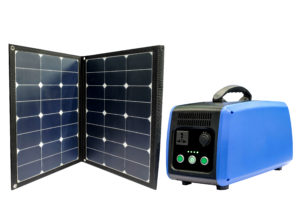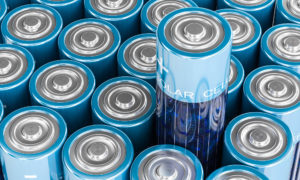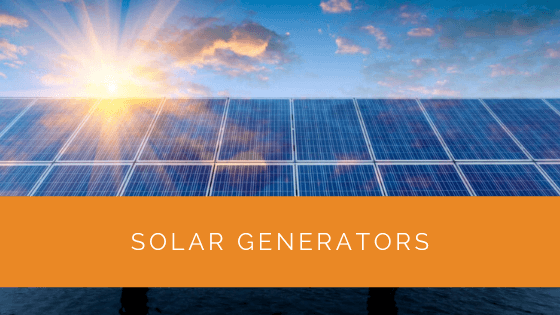Solar generators have become a sought-after solution for various power needs, whether ensuring an uninterrupted electricity supply during a blackout or harnessing solar energy on outdoor adventures. As solar power continues to gain momentum worldwide, the United Kingdom, like many other regions, has witnessed substantial growth in its solar capacity.
The market has evolved significantly in response to the increasing demand for sustainable energy sources, introducing innovative technologies to improve power generation from solar panels. Among these advancements, solar generators have emerged as a noteworthy option. From compact portable solar generators to comprehensive solar generator kits, these devices offer an array of benefits for both homeowners and outdoor enthusiasts alike. This article delves into the essential aspects of solar generators, shedding light on their functionality, advantages, and how they can enhance your renewable energy journey. Whether you’re considering a backup power source for your home or a reliable companion for your outdoor escapades, this informative guide has you covered.
Contents
- 1 Key Takeaways
- 2 What are Solar Generators?
- 3 What is the Purpose of a Solar Generator?
- 4 Why Should You Get Solar Generators?
- 5 Solar Generator Parts
- 6 Pros of Solar Generator
- 7 Cons of Solar Generator
- 8 How Do They Work?
- 9 Building a DIY Portable Solar Generator
- 10 Case Study: Deploying Solar Generators for Sustainable Power Solutions
- 11 Expert Insights From Our Solar Panel Installers About Solar Generators
- 12 Discover the Power of Solar with Solar Panels Network
- 13 The Bottom Line
Key Takeaways
- Solar generators harness and convert solar energy into electricity, powering small appliances and charging electronics. They are eco-friendly, portable, and low-maintenance alternatives to traditional generators.
- Solar generators consist of key components, including solar panels, batteries, charge controllers, and inverters, which capture, store, and convert solar energy into usable electricity.
- Building a DIY portable solar generator involves estimating your power requirements, obtaining the necessary components and tools, assembling the generator, and installing solar panels, charge controllers, batteries, and inverters. These generators offer renewable and accessible energy for various applications.
What are Solar Generators?
The term solar generator or DIY solar generators immediately makes you think of energy storage.
Unlike traditional generators that work on fossil fuels or use wind power, solar generators offer a convenient way to use the sun’s energy. They have no moving parts except portable solar generators.
These devices supply usable electricity despite not having high power levels. A solar generator will feature a functioning solar panel that becomes the main component of the device.
What is the Purpose of a Solar Generator?
The primary purpose of solar generators is to offer power to small appliances and charge electronics. Similarly, you can use a DIY solar power generator during a power outage for a few hours.
A solar generator is better than a fuel generator because it offers free energy. Also, you can create a DIY portable solar generator with the right tools.
Solar generators do not emit any harmful gasses, making them an eco-friendly option.

Why Should You Get Solar Generators?
The portable solar generators are light and travel-friendly. You will have access to portable solar power and continuous power output for your devices.
But, most importantly, solar generators do not produce any noise or require complicated maintenance.
Solar Generator Parts
Converting the DC power to AC requires solar panels, converters and batteries. This way, you could easily store and harness emergency backup power. These parts get connected to the solar charge controller to produce enough solar energy.
Most people utilise the best solar generator at camping sites due to its portability. The smaller solar panels on these manageable devices produce enough power for electrical appliances.
Lithium-ion Batteries
All of this is due to the Lithium-ion batteries that help the solar generator power devices. Not only do they last longer, but they also make the solar charger economical.
Some companies also use lead-acid batteries to meet their power needs.
Charge Controllers
A charge controller in your portable solar generator will control the solar energy and take it to the batteries as a current.
These controllers help limit how much power gets produced to avoid overloading the Lithium-ion. Indeed, solar generators offer a silent alternative and fuel-free way of making energy.
Pros of Solar Generator
- You get unlimited energy efficiency
- The clean energy produced will help charge your device
- You need to follow a stringent maintenance routine
- The fuel production is unlimited
- It does not make any sound
Cons of Solar Generator
- The initial cost is higher than that of conventional generators
- Its power generation will depend on the weather due to the solar panels used
- The recharging capacity is very uneven (Due to the UK weather)
- You only get a limited power supply from these generators
How Do They Work?
Even a DIY solar generator will have the same function as a portable solar generator. A solar charge controller will need solar panels to offer enough backup power to the solar generators.
As mentioned earlier, the main components of a solar generator are:
- Solar panels
- Battery
- Charge controller
- Inverter
These components work together to capture solar energy and convert it into electricity. Once the power gets converted due to the photovoltaic effect, it flows towards the battery, storing the power supply.
The charge controller takes care of the voltage reaching the stored power source. Then, the inverter turns the DC electricity to AC for some of your home appliances. It keeps solar energy as DC electricity to provide power to your devices.

Building a DIY Portable Solar Generator
Building a DIY solar generator is easier than you think. You must follow specific steps and understand the true meaning behind a solar generator’s functionality.
While building a DIY solar generator, the primary purpose is to use renewable, accessible and pure energy for your appliances. The basic steps involved in the process are:
Step 1: Estimate Your Power Requirement
Understand your needs for a DIY solar generator. A camping van might need 800WH of energy, whereas your home backup power will require 4,130WH.
Step 2: Get the Parts Required
To build your first DIY solar generator, you will need:
- Solar panels
- Charge controllers
- Batteries
- AC/DC inverter
- Case
- Electrical wiring
Step 3: Assemble the Tools
You will require tools like:
- Drillers
- Screwdrivers
- Utility knife
- Silicon sealant
- Wirecutter
- Electrical tape or glue gun
Step 4: Start the Building Process
First, you must use your tools to prepare the case to install the battery. After that, you must install the solar charger and the inverter. Make sure to keep the wiring and fire functional during installation.
Case Study: Deploying Solar Generators for Sustainable Power Solutions
Background
A small off-grid community in the Scottish Highlands sought to reduce its reliance on fossil fuels and increase energy resilience. With frequent power outages and a growing interest in sustainable living, the community decided to explore the use of solar generators as a clean and reliable power source. The primary goal was to find a solution that provided sufficient power for essential appliances and was adaptable to the remote, weather-variable conditions.
Project Overview
The project involved assessing the energy needs of the community, which included power for lighting, refrigeration, and communication devices. The key objectives were to provide a dependable power source, reduce environmental impact, and demonstrate the feasibility of solar energy in remote locations. The community opted for a combination of professionally installed solar generators and DIY units to meet their diverse needs.
Implementation
- Needs Assessment: We conducted a detailed survey of the community’s energy requirements, focusing on essential appliances and typical daily usage. This assessment helped in selecting the appropriate size and type of solar generators.
- System Selection: Based on the assessment, we recommended a mix of ready-made solar generators and DIY kits. The ready-made units included high-capacity lithium-ion batteries and efficient inverters, while the DIY kits allowed community members to assemble and customise smaller, portable units for individual use.
- Installation and Training: Our team installed the larger, professionally built solar generators and provided training sessions for community members on assembling and maintaining their DIY units. We emphasised the importance of proper wiring, safety precautions, and regular maintenance.
- Monitoring and Support: We set up a monitoring system to track the performance of the solar generators and provide ongoing support. This system helps the community optimise their energy use and identify any maintenance needs promptly.
Results
- Increased Energy Independence: The solar generators provided the community with a reliable power source, significantly reducing their reliance on fossil fuels and grid power. The availability of clean, renewable energy improved overall energy security.
- Cost Savings: The use of solar generators led to considerable savings on fuel and electricity costs. The initial investment was offset by the reduced need for traditional energy sources and the avoidance of fuel price volatility.
- Environmental Benefits: By switching to solar power, the community significantly lowered its carbon footprint. The solar generators produced no emissions, contributing to a cleaner environment and supporting the community’s commitment to sustainability.
- Community Engagement and Skill Development: The DIY solar generator kits not only provided power but also engaged the community in learning about renewable energy technologies. This hands-on experience enhanced local skills and increased awareness about sustainable practices.
Summary
This project highlights the successful integration of solar generators into a remote off-grid community, providing a practical and sustainable energy solution. The combination of professionally installed and DIY units met the community’s diverse needs while promoting energy independence and environmental responsibility. At Solar Panels Network, we are proud to support such initiatives, demonstrating the versatility and benefits of solar energy. This case study underscores our commitment to delivering tailored solutions that empower communities to embrace renewable energy and reduce their ecological footprint.
Expert Insights From Our Solar Panel Installers About Solar Generators
Solar generators are an excellent solution for those seeking a reliable and eco-friendly power source, whether at home or on the go. Their portability and ease of use make them ideal for camping trips or as backup power during outages. The lack of noise and emissions compared to traditional generators is a significant advantage for eco-conscious users.
Senior Solar Installer
The choice of components in a solar generator, such as high-quality lithium-ion batteries and efficient inverters, can greatly affect the system’s performance and longevity. It’s crucial to select the right components that match your energy needs and ensure optimal power storage and conversion.
Renewable Energy Consultant
DIY solar generators are becoming increasingly popular as they offer a cost-effective way to harness solar energy. However, it’s important to ensure that all components are correctly installed and compatible to avoid issues. Proper setup and maintenance are key to maximizing the efficiency and lifespan of these systems.
Lead Solar Technician
Discover the Power of Solar with Solar Panels Network
Are you navigating the world of solar installations? Look no further than Solar Panels Network, the UK’s trusted partner in harnessing the sun’s potential. Our dedication goes beyond just installations; we’re on a mission to transform how homeowners and businesses across the UK perceive and utilise energy. By choosing us, you’re reducing your carbon footprint and making a smart financial move that promises savings for years ahead. Contact us today and embark on your solar journey.
The Bottom Line
The primary purpose of a solar generator is to store, harness and convert solar energy into electricity. A DIY solar kit will help you build a DIY solar generator, and you can create your backup power.
The power supply will depend on the watt-hours from the solar panel used.
Essentially, a solar generator has a solar panel, a battery, an inverter and a charge controller. All of these work together to store energy produced from the sun.
A solar generator is portable, manageable and can charge your appliances efficiently. Not only do they produce clean energy, but they also require minimal maintenance.
Indeed, now you are fully equipped to channel your power outlets with a functioning portable solar generator.
About the Author
Solar Panels Network stands at the forefront of solar energy solutions, driven by a team of seasoned solar engineers and energy consultants. With over decades of experience in delivering high-quality solar installations and maintenance, we are committed to promoting sustainable energy through customer-centric, tailored solutions. Our articles reflect this commitment, crafted collaboratively by experts to provide accurate, up-to-date insights into solar technology, ensuring our readers are well-informed and empowered in their solar energy decisions.

